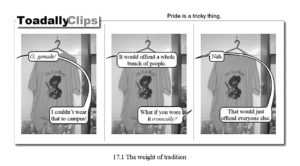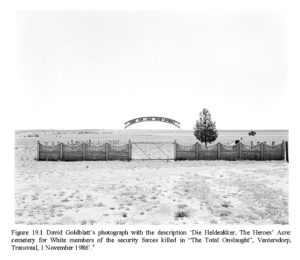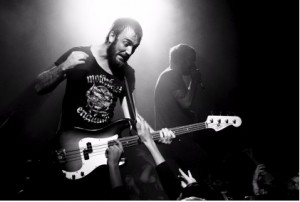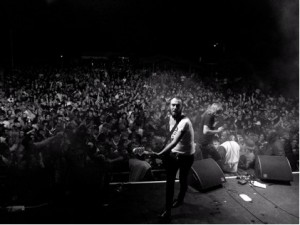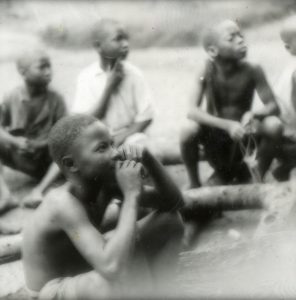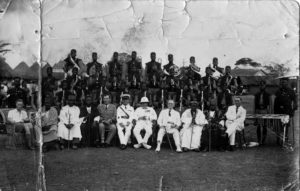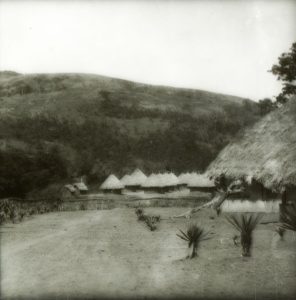Reshaping Remembrance ~ Why Have A Ghost As A Leader? The ‘De la Rey’ Phenomenon And The Re-Invention of Memories, 2006-2007
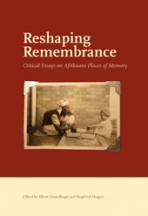 1.
1.
In an altogether unusual way, a dimension of the South African War of more than hundred years ago came to knock on the door of Afrikanerdom in 2006 and 2007, in the form of a popular song entitled ‘De la Rey’, and sung by Louis Pepler under the stage name Bok van Blerk. The song is about the exploits of the Boers during the war under the charismatic leadership of General Jacobus Hendrik (Koos) de la Rey. At the time of the centenary of the South African War in 1999-2002 there was little sign of mobilisation around bygone military events; in fact, the Afrikaners’ commemoration of the war was characterised by contemplative reflection rather than by an emotional reliving of the past.[i] However, four years later ‘De la Rey’ struck gold. Within less than a year Bok van Blerk sold the unequalled number of 200 000 CDs – an exceptional achievement in a relatively limited market. Moreover, his concerts were packed with enthusiastic fans, from the rural areas in South Africa to as far afield as America, Canada, the Netherlands and New Zealand.[ii]
For many fans the concerts were an emotional issue. Some teenagers were totally carried away: with closed eyes and hand to the heart they almost went into a trance on hearing the first chords of De la Rey. Among the enthusiastic crowds were those who regard the song as nothing less than a new national anthem.[iii] Moreover, this song did not appeal to the youth only. In Potchefstroom, where Bok van Blerk performed at the Aardklop Arts Festival, ‘little old ladies with gilt-framed reading glasses’ whispered the words in unison while ‘elderly men wearing Piet Retief beards’ jumped to their feet and heartily joined the students in song.[iv]
2.
What was Van Blerk’s intention in bringing De la Rey back to life? The media regularly questioned him about this and his answer was the same every time: it was merely about a historical figure and not politically motivated.[v] What complicates the matter, however, is that there are of course many levels of political expression. If one focuses on overt and explicit intentions linked to a programme, there is no evidence that Van Blerk and his group had any connections with organised politics before the CD was launched. But other dimensions of political involvement could indeed exist. In his description of the connection between politics and music, Goehr points out that
… by denying involvement with the political, musicians might be playing out in music their most effective political role – … in abstraction, in transcendence … In general, abstraction or transcendence has been seen to be achieved in the employment of creativity, imagination, and contemplation in what nearly twocenturies ago was referred to as ‘the free play of faculties’.[vi]
It can be argued that it is at this broad level of transcendence that the political nature of De la Rey comes to the forefront – it touches on the cultural and historical dimensions, and within this framework creates space for free association. Van Blerk’s viewpoint is that it deals with the restoration of a part of history that is in danger of being forgotten. He demarcates the terrain within which he operates: ‘Patriotism is not always political.
Just ask the Scots who still cry – even today – when they hear “Flower of Scotland” being played. It touches one’s inner being, one’s identity and culture’.[vii] From this broad, transcendental perspective the audience can then interpret the song in their own way.
De la Rey must also be read against the background of the other songs on the CD that are mostly about liquor consumption, cars, girls in bikinis and rugby (the ‘coloured’ wing Bryan Habana). These contributions are more in line with mainstream Afrikaans light music and have a different flavour. Consequently one can deduce that it was not initially the intention of Van Blerk and his group to send out a strong political message.
In slight contrast to the political assumptions concerning De la Rey, it was also alleged that the song was merely produced for financial gain. Van Blerk denied this: ‘On the contrary, it was a bit of a risk to include this song in a commercial album. If someone had tried to tell me a year ago that a song about a Boer general would become a number one hit on the radio, ahead of the top names in the music business, I would have laughed at him.’ At the same time, he made the point that it was only logical that an artist would never turn out a product in the hope that it will not succeed. However, De la Rey exceeded their wildest expectations and ‘we are obviously not going to be ashamed of, or apologise for the fact that we are making money with it’.[viii]
De la Rey as a historical figure was not simply chosen by chance. Besides the fact that De la Rey rhymes with the Afrikaans word ‘lei’ (to lead), which was surely an important consideration, Van Blerk also found him a ‘fascinating character’.[ix] The renowned poet and writer Antjie Krog agrees with this view. She contends that De la Rey was ‘a fantastic choice for the song, considering that on the very day of his death various myths came into being about the man’.[x]
There were various elements and apparent paradoxes that afforded him status as an enigma. He had his doubts about Paul Kruger’s declaration of war in 1899, yet he avowed that he was altogether willing to commit himself to the battle. During the war, he became known as the ‘Lion of the Western Transvaal’ as a result of his military genius. But he was also a gallant general who showed concern for the wounded general P.S. Methuen. At the time of the turmoil caused by the 1914 Rebellion he was strongly influenced by the shadowy Boer prophet Siener van Rensburg, and this contributed to the fact that he acquired a certain mystic quality. In addition, the circumstances surrounding his death, which Siener supposedly predicted, fanned his supporters’ suspicions. On the eve of the Rebellion, just outside Johannesburg, De la Rey was accidentally hit by a ricocheting bullet fired by the police, who mistakenly identified the car in which he and General C.F. Beyers were travelling as that of a criminal gang. Some of his supporters, who had their doubts about the way in which he died, spread the false rumour that he had been shot deliberately on government orders.[xi]
His mythical status flourished even further. Aspects of his career and his death clearly contributed to the creation of his image as a charismatic hero. It is this De la Rey aura that Van Blerk and company exploited in the song and the video. Antjie Krog rightly points out that ‘De la Rey is pictured in romantic terms in the song: rushing at a gallop, flying across the landscape, known by his praise name: the Lion of the West Transvaal. A lion and a horse, majestic, beautiful, fearless and fast’.[xii] But why, one may well ask, have mainly the youth of the ‘volk’ now decided to choose a ghost as a leader?
3.
Historically speaking, protest music was not an outstanding genre in Afrikaans music, with the important exception of the Voëlvry Movement who in the 1980s used their music in a unique way against the ruling apartheid government.[xiii] During the first half of the 1990s, at the time of the transition in South Africa, Afrikaans music showed mainstream qualities and was mainly devoid of political elements. Yet, music with implicit social commentary gradually started to surface. Bands such as those of Karen Zoid – the first Afrikaans rock chick – and others with names like ‘Klopjag’ (‘Raid’), ‘Snotkop’ (‘Snothead’), ‘Brixton Moord en Roof Orkes’ (‘Brixton Murder and Robbery Band’) and ‘Fokofpolisiekar’ (‘Fuck Off Police Car’) all addressed elements of the changing contemporary dispensation and established their own artistic critical accents.
Some of the music, like Zoid’s, contained nihilistic ambivalences, while the lyrics of others were more outspoken in denouncing state policy and showed increasing rancour at still having to do penance, as Afrikaners, for the sins of apartheid. Although they were at times explicit in their discontent, they did not express this dissatisfaction in the form of a potentially ethnic project.[xiv] Nevertheless, it can be argued that the frustration that these groups pinpointed did, to some degree, prepare the way for De la Rey.
A striking feature of De la Rey is the nostalgic undertone of the song, which refers longingly to a hero of bygone times. Although the phenomenon of nostalgia has the past as its subject, its essence is to be found in the present. It is constructed in the present and accordingly bears the tracks of the spirit of the age in which it is created. At the same time, the nostalgically constructed mental image of the past is set up in opposition to the present, which subsequently implicitly forces a comparison. In both cases, a particular reciprocal action takes place. The past is inclined to become purified and idealised while the present is experienced as being disagreeable and threatening. Emotional strength can therefore be drawn from the past.[xv]
However, this does not necessarily mean that nostalgia is an antiquated and sentimental kind of reflection that has a crippling effect on the challenges of the present. As Kloppers[xvi] indicates, ‘(i)t is rather a form of affirmation of life, recalling certain matters from the past and reclaiming them (often in new ways)’. In this sense nostalgiacannot in the first place be seen as atavistic in so far as it rather attempts to overcome a modern kind of fragmentation by energising images of the past.[xvii] In conjunction with this aspect, nostalgia can be a journey of discovery that gives meaning to the present.
According to the well-known Afrikaans writer Dana Snyman, who relies heavily on nostalgia in his work, ‘after 1994 many Afrikaners were slightly ashamed of our past […] now we are unashamedly involved in rediscovering ourselves. To rediscover yourself you must know who you were. That is why we become nostalgic about the past’.[xviii] Within the context of rituals of dance and music that have the past as subject, Eyerman and Jamison emphasise that this practice does not demonstrate some kind of ‘primitiveness’, but rather constitutes a present that can be remembered in a creative way. Similarly nostalgia cannot merely be linked to particular political schools of thought. In this regard Christopher Shaw and Malcolm Chase point out that ‘[t]he view of nostalgia as a self-serving, chauvinist, right-wing version of the past foisted by the privileged and propertied likewise neglects half the facts. The left no less than the right espouses nostalgia.’[xix] Without wanting to imply that the African National Congress still strives after a leftist ideological agenda today, it can be said that it does indeed often appeal to a leftist struggle past.
It is easy to see the ghost of the old and obdurate Afrikaner nationalism in these De la Rey flights of memory. Perhaps too easy. It is true that a few people waved the old South African flag at concerts, but on the whole the discourse exuded a different spirit. Van Blerk himself claims that it has to do with respect for cultural goods and that they are ‘100% in favour of moving on’, of leaving the apartheid past behind and of being part of the ‘rainbow nation … but then we ask to be treated in the same way as other groups’.[xx] The desire is therefore expressed to be accepted fully as a minority and without reserve in the new South Africa.
Although his word naturally does not have to be accepted, Van Blerk’s followers also make it clear that
[we do not] long for the old dispensation of the Broederbond and the mendacious National Party ministers. We are merely seeking a new identity, an identity that is removed from the lip-service and lies of the National Party. And the attempts at indoctrination by the Broederbond. In other words, the Afrikaners’ own identity and not the politicians’ rendering … And that new identity has become clear to me in the case of artists like … Bok van Blerk.[xxi]
4.
The emotion-laden quest for identity of Van Blerk’s followers can also be situated within the broader context of South Africa’s material realities. As far as the economy is concerned, there are analysts who claim that despite difficulties, the Afrikaners are financially in a better position at present than in the time of apartheid.[xxii] Ton Vosloo, chairman of Naspers, has pointed out that notwithstanding ‘pockets of poor whites … in material terms things have never been so good … Notice who possess beach houses and drive 4X4s, besides a Merc and another smaller car as well as a bakkie in the garage or yard. We complain far too easily while we are sitting pretty.’[xxiii]
It is in this connection that Herman Wasserman wrote a satirical response in which he exhorts De la Rey to come and lead the Boers:
You will have to come and fetch them. But remember not to look for them in the wrong places. Although Bokkie’s little song laments the fact that his wife and child are languishing in a camp (‘my vrou en kind lê in ’n kamp en vergaan’), the people who sing his song at the top of their voices do not live in squatters’ camps. Their children are not perishing while their parents earn a starvation wage by toiling in other people’s kitchens and gardens. No, you will have to fetch your followers from Tyger Valley, Somerset Mall and Menlyn Park. You will see huge, shiny 4X4s, packed with supplies from Woollies, following your horse out of the parking areas.[xxiv]
De la Rey is also advised to change his attire, because ‘that bandolier and waistcoat are going to make you look very out of place among the Billabongs and Levi’s that the young fellows wear when they go out for a drink at the Mystic Boer in the evenings’.[xxv]
This point of departure does not necessarily cancel the idealistic yearnings of Van Blerk’s adherents, but by involving other realities it does indeed place the youth’s position in perspective. An analysis of the nature of the De la Rey concerts clearly shows that excessive drinking is part of the profile. A report of a specific concert stated that the drinking went on to a point of great exuberance.[xxvi] Although excessive drinking is, of course, quite common among the youth and does not necessarily have any greater overt meaning, it is in sharp contrast to the sober historical figure that is called to mind. One commentator formulated it in the following way:
The Boers of whom Bok van Blerk sings were God-fearing people with self-respect, pride, ethical values, moral values, standards and loyalty. The ‘Boers’ who sing De la Rey in bars these days lead debauched lives. They have no self-respect. They sleep around and have no moral or ethical values, because all they do is look for the next opportunity to become motherless. What is more, there is much we can say with regard to loyalty.[xxvii]
In the same way there is also a discrepancy between the language usage of certain individuals and the general passion for Afrikaans Van Blerk lays claim to. One fan had the following to say about Van Blerk: ‘I dig his music. He’s a cool dude. I like Bok because he says it like it is. I’m telling you, he’s hot! Hot like a potato!’[xxviii] It is clear that some young people will derive from rock concerts whatever makes sense (or non-sense) to them, notwithstanding the more elevated connotations that others might want to attach to such shows. These expressions of behaviour indicate simultaneously the multiple contexts within which De la Rey has been received and interpreted.
Furthermore, it is obvious that the De la Rey phenomenon shows strong signs of a masculine character. As Cornell puts it, ‘Masculinity is simultaneously a place in gender relations, the practice through which men and women engage that place in gender, and the effects of these practices in bodily experience, personality and culture.’[xxix]
In the case of De la Rey it is not only the masculine icon of the man on his horse that occupies the particular space, but without trying to pretend that De la Rey does not have its quota of female fans, it seems as if men are over-represented at concerts and women stay slightly in the background. De la Rey, it appears, speaks more powerfully to men than to women.[xxx]
It is understandable that if one looks at the phenomenon from a different angle, both the lyrics of De la Rey and the emotive nature of the song are enough to make one suspect that a resurgence of sectional nationalism is apparent. In the absence of largescale formally organised nationalistic Afrikaner structures that are striving for the return of the old political dispensation, it would however be difficult to channel the possible power of De la Rey into meaningful avenues. Today, without the backing of state power, Afrikaner organisations such as the ‘Federasie van Afrikaanse Kultuurkringe’ and ‘Solidariteit’ have a different role than in the past.
In this respect, the song at best caused political stirrings. It should also be taken into account that some of the Afrikaner youth see the ‘old’ Afrikaner nationalism as a strange, distant phenomenon with which they find it difficult to identify; it has an archaic and problematic character. It is even experienced so negatively that it is felt it should rather not be studied.[xxxi] The idiom and register in which some of the youth discover De la Rey differs altogether from the way in which older generations experience it.
A somewhat unexpected reaction to the De la Rey phenomenon at one stage was that the government deemed it advisable to issue a statement on the matter. The statement read that each group has the right to freedom of speech but that it is necessary to be aware of ‘De la Rey and its coded message to fomenting revolutionary sentiments’.[xxxii]
The dynamic of such an exaggerated reaction points to a distrustful state. The Afrikaner establishment reacted in a similar manner to the Afrikaans anti-apartheid music of the Voëlvry Movement in the late 1980s.[xxxiii] Likewise, under communism in Eastern Europe, popular music was frequently seen as subversive. Garofalo points out that this was a widespread phenomenon:
[The] suspicion [exists] on the part of the authorities that even the most innocuous songs contain subversive political content, which is received as such by a ‘knowledgeable’ audience. The tendency has had the effect of politicizing music which is not intentionally political and enhancing the power of music which is.[xxxiv]
In this way, exactly the opposite is achieved of what was initially desired. It is not too far-fetched to suspect that the ANC’s reaction to the song possibly lay in the fact that during the anti-apartheid struggle the term ‘Boere’ was synonymous with the enemy and that it was expressed, among others, in the slogan ‘Kill the Boer, kill the farmer’. Today, thirteen years after 1994, the term ‘Boer’ has not yet lost its negative political connotations in certain black circles.[xxxv] In the light hereof it is understandable that a song in which the ‘Boers’ are mobilised might cause suspicion. Sean Else, one of the cowriters of De la Rey, found it ‘quite worrying that we be analysed under a political microscope’ as a result of ‘a song that is about a Boer general of 100 years ago’. According to Else, a song that the previous deputy president Jacob Zuma regularly sang at gatherings, ‘Awulet’ umshini wam’ (‘Bring my machine gun’) had the potential to befar more inflammatory than De la Rey.[xxxvi]
5.
Reservations about the song probably emanate from an assumption that the Afrikaner youth in the new South Africa ought to create a new and more appropriate identity. The irony however is that for some supporters De la Rey, as indicated, is in fact regarded as a positive, forward-looking expression of identity, supported by a relatively uncontaminated pre-apartheid South African version of history. Since many of these young people have a limited understanding of the past, they see De la Rey as new and fresh, despite the possible repugnance that it may evoke in others.
In a concluding perspective, it is useful to compare De la Rey with the way in which the South African War was used as a historical marker in Afrikaner circles in the past. During the 1930s and 1940s, at the time of the flourishing of Afrikaner nationalism that finally came to political fruition at the polls in 1948, the prevailing discourse on the South African War mainly centred on regaining political power after the defeat suffered in 1899-1902. When the results of the 1948 election became known, some Nationalists took it to mean that the injustices of the past had been redressed.[xxxvii] In 2006 and 2007, the discourse mainly centred on a cultural expression and rediscovery of identity without conveying a message that focused on the regaining of power. In fact, in a certain sense, the song reflects the sense of futility in realising that power has been surrendered for good, thus the almost plaintive appeal to a bygone leader whose time is, likewise, long past.
The great majority of Afrikaners are level-headed enough to realise that erstwhile political power cannot be regained. During an interview in 2004, Tim du Plessis, the editor of Rapport, made the following comment on the creation of a new Afrikaner identity: ‘No-one sees a political Afrikaner any longer. Politics is a sore point that white Afrikaners in particular avoid, apart from on election days … but there are other spaces that they explore intensely.’ In this regard there is ‘a golden thread that runs through everything: continuing interaction with the country that is just as dynamically and unpredictably changing as the Afrikaans community’.[xxxviii] Two years later, the De la Rey phenomenon would prove to be a manifestation of the process. The chords of the song resounded loudly in an apparent attempt to mobilise the Afrikaner. But this does not necessarily imply any sinister intent. Given the constant shifts occurring in the Afrikaner community it appears to be little more than a temporary flare-up that could be taken over by other voices promoting an identity strain containing different accents. Be it as it may, it will be difficult in the future to ignore De la Rey as a retrospective pointer in Afrikaans popular culture – even if it is only enshrouded in spectral mists.
NOTES
i. A. Grundlingh, ‘Reframing remembrance: The politics of the centenary commemorations of the South African War of 1899-1902’, in: Journal of South African Studies 30(2) ( June 2004), 369-375.
ii. Die Burger, 7 February 2007, ‘Dié Bok se bokkies wil hom hééé!’
iii. Die Huisgenoot, 15 February 2007, ‘Hoe rey die boere? Jil-Jil so!’
iv. Beeld, 28 September 2006, ‘Bok van Blerk se magtige dreuning’.
v. For example, ‘Bok maak hart oop oor De la Rey’, in Rapport, 26 February 2007.
vi. L. Goehr, ‘Political music and the politics of music’, in: The Journal of Aesthetics and Art Criticism (52)1 (Winter 1994), 107.
vii. Rapport, 24 February 2007, ‘Bok maak hart oop oor De la Rey’.
viii. Ibid.
ix. Rapport, 21 October 2006, ‘Bok van Blerk staan styf oor sy De la Rey-lied’.
x. Die Matie, 21 March 2007, ‘Krog positief oor De la Rey’.
xi. H. De la Rey, Die ware generaal Koos de la Rey [compiled by Lappe Laubscher]. Pretoria: Protea Boekhuis 1998; F. Pretorius, Generaal JH de la Rey, Pretoria: Protea Boekhuis 2007; H.J. May & I. Hamilton, Die dood van Generaal de la Rey, Cape Town: Nasionale Boekhandel 1968; A. Grundlingh, ‘Probing the prophet: The psychology and politics of the Siener van Rensburg phenomenon’, in South African Historical Journal 34 (1996), 225-239.
xii. A. Krog, ‘The myth, the general and the battlefield’, Lecture, Department of Sociology, Stellenbosch University, 16 March 2007.
xiii. A. Grundlingh, ‘Rocking the boat in South Africa? Voëlvry music and Afrikaans anti-apartheid social protest in the eighties’, in: International Journal of African Historical Studies 37(3) (2004), 483.
xiv. Andries ‘Roof’ Bezuidenhout, ‘From Voëlvry to De la Rey: Popular Music, Afrikaner nationalism and lost irony’, LitNet Seminar Room, 28 February 2007, http://www.litnet.co.za (accessed 2 March 2007); M. Bosman, ‘Die FAK-fenomeen: Populêre Afrikaanse musiek en volksliedjies’, in: Tydskrif vir Letterkunde 41(2) (Winter 2004), 36-37; Akropolis, 16 June 2007, ‘Die jeug se vastrap’.
xv. For a general discussion on the nature of nostalgia see D. van Zyl, ‘O boereplaas, geboortegrond’: Afrikaner nostalgia and the romanticisation of the platteland’, Unpublished Honours research essay, Stellenbosch University, 2006, 3; F. Davis, Yearning for yesterday: A sociology of nostalgia. New York: The Free Press 1979, 37-38.
xvi. E. Kloppers, ‘Die postmodernisme, nostalgie en die himniese geheue’, in: Stilet (XV(2) (September 2003), 205.
xvii. Compare J. Fishman, Language and nationalism, Massachusetts: The Open Press 1972, 9.
xviii. Sarie, June 2007, ‘Gister se dinge’.
xix. C. Shaw & M. Chase, The imagined past: History and nostalgia. Manchester: Manchester University Press 1997, 27.
xx. Beeld, 17 November 2006, ‘Besige bok is ’n bok vir sports’.
xxi. 21 H.H.B. Zaayman, ‘Leandri jou doring’, 6 December 2006 http://www.litnet.co.za (accessed 2 February 2007).
xxii. S. Terreblanche, ‘Mag en onverdiende rykdom in Suid-Afrika’, in Vrye Afrikaan, 15 February 2007.
xxiii. Die Burger, 11 May 2007, ‘De la Rey-verwagtinge en die pad na oorlewing’.
xxiv. Die Burger, 12 February 2007, ‘Repliek: Ope brief aan Koos de la Rey’.
xxv. Ibid.
xxvi. Die Huisgenoot, 15 February 2007, ‘Hoe ry die boere? Jil-Jil so!’
xxvii. Die Huisgenoot, 1 March 2007, ‘Forum: Brief van L.M. Janse van Vuuren’.
xxviii. Die Huisgenoot, 15 February 2007, ‘Hoe ry die boere? Jil-Jil so!’
xxix. R.W. Connell, Masculinities, Oxford: Blackwell Publishers 1995, 71.
xxx. Personal observation by author and independent observations by Sandra Swart and Lize-Marie van der Watt.
xxxi. Feedback of Stellenbosch University History students, 2007.
xxxii. ‘Press statement’, http://everfasternews.com (accessed 7 February 2007).
xxxiii. A. Grundlingh, ‘Rocking the boat in South Africa? Voëlvry music and Afrikaans anti-apartheid social protest in the eighties’, in: International Journal of African Historical Studies (37(3) (2004), 491.
xxxiv. R. Garofalo (ed.), Rockin’ the boat: Mass music and mass movements. Cambridge MA: South End Press 1992, 10.
xxxv. Mail and Guardian, 18-24 May 2007, ‘De la Rey – Is it just a song?’
xxxvi. Beeld, ‘Almal ken die wet, sê Sean Else oor ‘De la Rey’.
xxxvii. A. Grundlingh, ‘The war in twentieth-century Afrikaner consciousness’, in: D. Omissi & A. Thompson (eds), The Impact of the South African War. Basingstoke: Palgrave 2002, 29.
xxxviii. Rapport, 3 October 2004, ‘’n Groep wat herskep word’.
References
Akropolis, 16 June 2007, ‘Die jeug se vastrap’.
Beeld, 28 September 2006, ‘Bok van Blerk se magtige dreuning’.
Beeld, 17 November 2006, ‘Besige bok is ’n bok vir sports’.
Beeld, ‘Almal ken die wet, sê Sean Else oor ‘De la Rey’ ‘.
Bezuidenhout, Andries ‘Roof’. ‘From Voëlvry to De la Rey: Popular Music, Afrikaner nationalism and lost irony’, LitNet Seminar Room, 28 February 2007, http://www.litnet.co.za (accessed 2 March 2007).
Bosman, M. ‘Die FAK-fenomeen: Populêre Afrikaanse musiek en volksliedjies’, in: Tydskrif vir Letterkunde 41(2) (Winter 2004), 36-37.
Connell, R.W. Masculinities, Oxford: Blackwell Publishers 1995, 71.
Davis, F. Yearning for yesterday: A sociology of nostalgia. New York: The Free Press 1979, 37-38.
De la Rey, H. Die ware generaal Koos de la Rey [compiled by Lappe Laubscher]. Pretoria: Protea Boekhuis 1998
Die Burger, 7 February 2007, ‘Dié Bok se bokkies wil hom hééé!’
Die Burger, 12 February 2007, ‘Repliek: Ope brief aan Koos de la Rey’.
Die Burger, 11 May 2007, ‘De la Rey-verwagtinge en die pad na oorlewing’.
Die Huisgenoot, 15 February 2007, ‘Hoe ry die boere? Jil-Jil so!’
Die Huisgenoot, 1 March 2007, ‘Forum: Brief van L.M. Janse van Vuuren’.
Die Matie, 21 March 2007, ‘Krog positief oor De la Rey’.
Fishman J. Language and nationalism, Massachusetts: The Open Press 1972, 9.
Garofalo R. (ed.), Rockin’ the boat: Mass music and mass movements. Cambridge MA: South End Press 1992.
Goehr, L. ‘Political music and the politics of music’, in: The Journal of Aesthetics and Art Criticism (52)1, Winter 1994.
Grundlingh, A. ‘Probing the prophet: The psychology and politics of the Siener van Rensburg phenomenon’, in: South African Historical Journal 34 (1996), 225-239.
Grundlingh, A. ‘The war in twentieth-century Afrikaner consciousness’, in: D. Omissi & A. Thompson (eds), The Impact of the South African War. Basingstoke: Palgrave 2002.
Grundlingh, A. ‘Reframing remembrance: The politics of the centenary commemorations of the South African War of 1899-1902’, in: Journal of South African Studies 30(2) (June 2004), 369-375.
Grundlingh, A. ‘Rocking the boat in South Africa? Voëlvry music and Afrikaans anti-apartheid social protest in the eighties’, in: International Journal of African Historical Studies 37(3) (2004), 483-514.
Kloppers, E. ‘Die postmodernisme, nostalgie en die himniese geheue’, in: Stilet (XV(2), September 2003.
Krog, A. ‘The myth, the general and the battlefield’, Lecture, Department of Sociology, Stellenbosch University, 16 March 2007.
Mail and Guardian, 18-24 May 2007, ‘De la Rey – Is it just a song?’
May, H.J. & Hamilton I.. Die dood van Generaal de la Rey, Cape Town: Nasionale Boekhandel 1968.
‘Press statement’, http://everfasternews.com (accessed 7 February 2007).
Pretorius, F. Generaal JH de la Rey, Pretoria: Protea Boekhuis 2007.
Rapport, 3 October 2004, ‘’n Groep wat herskep word’.
Rapport, 21 October 2006 ‘Bok van Blerk staan styf oor sy De la Rey-lied’.
Rapport, 24 February 2007, ‘Bok maak hart oop oor De la Rey’.
Sarie, June 2007, ‘Gister se dinge’.
Shaw, C. & Chase, M. The imagined past: History and nostalgia. Manchester: Manchester University Press 1997.
Terreblanche, S. ‘Mag en onverdiende rykdom in Suid-Afrika’, in Vrye Afrikaan, 15 February 2007.
Van Zyl, D. ‘O boereplaas, geboortegrond’: Afrikaner nostalgia and the romanticisation of the platteland’, Unpublished Honours research essay, Stellenbosch University 2006.
Zaayman, H.H.B. ‘Leandri jou doring’, 6 December 2006 http://www.litnet.co.za (accessed 2 February 2007).
